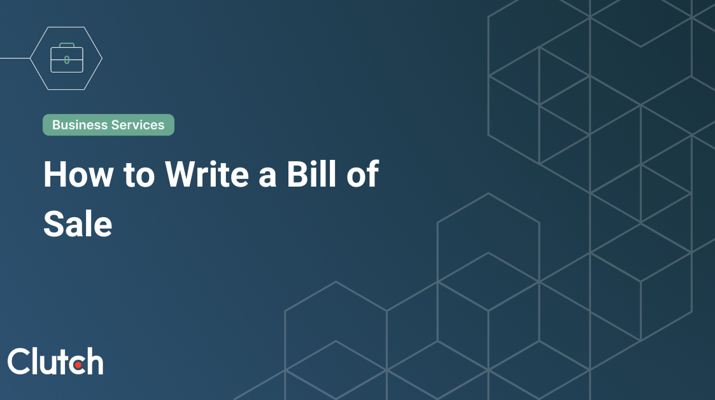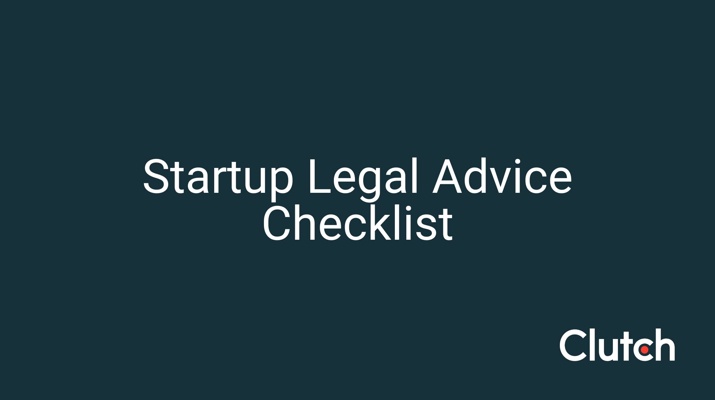Intellectual property impacts businesses across the globe, so it is key for business owners to feel comfortable having conversations with some complex vocabulary. This glossary will help readers better understand key terms and concepts related to IP law.
B2B companies face a range of complex legal issues regarding intellectual property (IP) law. Intellectual property refers to any intangible asset created by the mind that can be legally owned and protected. This includes patents, trademarks, copyrights, trade secrets, and other such forms of knowledge or information.
Intellectual property rights give creators the exclusive right to use their creations for a specific period of time. This protects their works from being used without permission or proper compensation.
Looking for a Legal agency?
Compare our list of top Legal companies near you
Find a provider
As such, businesses need to understand the various aspects of IP law to maximize their potential and protect their work.
This glossary will provide definitions of various terms that are essential to understanding intellectual property law that will help interested parties excel when it comes to working on cases or related projects.
In need of an intellectual property law firm? Check out our directory of trusted providers.
82 IP Law Terms to Know
There are a lot of complex terms that fit within the field of intellectual property.
A
- Abstract: A concise statement of the technical disclosure.
- Abandoned Application: An application that isn’t active or pending.
- Actual Filing Date: The patent filing date.
- Agent: An individual who is registered to practice before the office. This person isn’t an attorney but is authorized to act for or on behalf of the applicant.
- Agreement: A legal contract.
- Amendments to Patent Applications: Any additions made to an application during a process.
- Allegation of Use (AOU): An applicant’s written submission that uses a trademark with specified goods and services.
- Annuity Fees: Also referred to as “annuities,” these are government fees that patent applicants and holders must pay to maintain their rights each year.
- Application Assistance Unit (AAU): The call center that serves the Office of Patent Application Processing (OPAP) with questions related to the patent process.
- Artistic Works: Includes drawings, paintings, literary works, and more.
- Assignment of Copyright: Transfer of copyright ownership, which must be done in writing.
- Attorney-Client Privilege: All communication between a lawyer and their client is confidential.
- Authorship: Creator of an original work.
B
- Benefit Claim: The claim from an applicant in a non -provisional application of a benefit of an invention.
- Blackout Period: The period after a trademark is approved for publication.
C
- Cancellation Proceeding: Legal proceeding before the appeal board where a third party presents evidence that existing trademark registration should be canceled.
- Cease and Desist: A letter a trademark owner sends to another party alleging the recipient infringes on the owner’s rights.
- Certification Mark: A mark that identifies goods and services at a certain standard.
- Claim: A statement that states in specific terms about the invention and what it does.
- Combination Patent: A patent granted for an invention that unites existing components.
- Common Law Rights: Trademark rights that are established when a trademark is used for goods and services. These are limited to the location where the trademark is used.
- Complaint: A formal written statement on file with a court if someone plans to sue.
- Concept: An idea or design.
- Copyright: Protected works that is tangibly expressed.
- Counterclaim: A claim made by someone being sued against the party suing them.
D
- Deceptive Trademarks: A trademark that uses language that could mislead a consumer.
- Declaration: A statement verifying that the information in a submission is true and factual.
- Defendant: The party being sued.
- Design Patent: Granted to anyone who invents a new and original design.
- Disclaimer: Giving up all rights to a patent claim.
- Disclosure: In order to receive a valid patent, an application needs to contain a full explanation of the invention.
- Domain Name Dispute Resolution: With this policy, most types of trademark-based disputes involving domain names must be resolved, or it will be canceled, suspended, or transferred.
E
- Enablement: The specification in a patent application that says the invention must be described in a way that would enable someone to use the invention without experimentation.
- Ensnarement Defense: A defense in a patent litigation that argues an asserted scope could ensnare a prior art
- EPO: European Patent Office
- Examiner’s Amendment: An amendment to a trademark application made by an examining attorney
- Examining Attorney: An attorney at the patent office reviews applications to determine if they meet the right requirements.
- Equity: Stock or ownership rights granted to the inventor.
- Exclusive Right: The power or privilege a party has under patent law or trademark law.
- Express Abandonment: A patent claim or application may be abandoned by the patent owner with a written declaration.
F
- Fair Use: Allows copyrighted materials to be used for certain purposes without violating rights.
- Federal Registration: A trademark that has been registered with a federal register.
- Filing Basis: The legal basis for filing an application to register a trademark.
- Filing Date: The date the office receives the application with the subject matter and all required materials.
G
- Goods and Services: What a trademark is used in connection with.
I
- Incontestable Trademark: A registered trademark that can only be canceled for very limited reasons.
- Independent Claim: A claim that doesn’t refer back to or depend on another claim.
- Industrial Property: A type of intellectual property that includes inventions, patents, trademarks, and industrial designs.
- Informal Application: A trademark application that’s been filed but doesn’t meet requirements.
- Intellectual Property Rights: All rights associated with an intangible asset owned by a company or person and protected against use without consent.
- Issue Date: Date assigned to an application.
J
- Joint Application: An application with two or more people.
K
- Knock-Out Reference: A term for a prior art that is identical to an invention for which patent protection seems futile.
L
- Legal Entity: An organization or person with legal rights and obligations participating in legal processes.
- License: Permission granted to use someone’s intellectual property.
- License Agreement: A legal document detailing terms of use.
- Licensor: The assignee of a license.
M
- Multiple Dependent Claim: A type of dependent claim that references in the alternative to more than one claim has been previously presented.
N
- Non-Disclosure Agreement (NDA): Protects confidential information.
- Non-Provisional Application: The final patent application.
O
- Office of Patent Application Processing (OPAP): The office that performs all initial processing for new applications to ensure they are ready for animation.
P
- Patent: The granting of legally protected rights to an inventor of a specific innovation.
- Patent Application: The form needed to have a patent.
- Patent Attorney: An attorney that specializes in IP and patent law.
- Patent and Trademark Office: The patent office in the United States.
- Patent Family: The same invention disclosed by common inventors and patented in more than one location.
- Patent Infringement: Unauthorized use of a patented invention.
- Patent Cooperation Treaty (PCT): This treaty allows applicants to file a single application that is equivalent to a regular national filing when certain requirements have been fulfilled.
- Prior Use: Use of a trademark that includes sales or advertisements for goods or services in commerce. The person who uses a trademark first is a prior user.
- Priority Claim: An unsecured claim that is entitled to be paid ahead of other unsecured claims.
- Public Domain: Indicates the lack of patent ownership or copyright, meaning anyone can use it.
R
- Registration Basis: The legal basis for receiving your trademark registration
S
- Service Mark: Any word, symbol, or any combination used or intended to be used to identify the services of one provider from services provided by others and to indicate the source of the services.
- Specification: A written description of the claimed invention and the making process
T
- Trade Secrets: Secret information that companies keep to give them an advantage
- Trademark: Any word, design, or artwork that identifies a source of goods or services.
- Trademark Infringement: Unauthorized use of a trademark
U
- USPTO: The United States Patent and Trademark Office
- Utility Patent: The most common type of patent application that covers any new and useful composition of matter.
W
- Withdrawn Patent: An applicant filing to withdraw an accepted patent application.
- World Intellectual Property Organization (WIPO): An agency in the UN that’s responsible for protecting IP worldwide.
- Work of Visual Art: A piece of art (painting, drawing, sculpture, print, image) produced in a limited edition.
Understand Intellectual Property Concepts for Business Success
The concept of intellectual property can be particularly confusing to newcomers, especially given all of the new terms and phrases one must learn to get into the conversation. But it is critical for business owners, especially ones with an original product, to learn the interworkings of the practice to keep ownership of their ideas.
Intellectual property law is a complex and ever-changing field, but having a comprehensive understanding of the terminology can help ensure successful protection of one's creative works.
About the Author
Anna Peck
Content Marketing Manager at Clutch
Anna Peck is a content marketing manager at Clutch, where she crafts content on digital marketing, SEO, and public relations. In addition to editing and producing engaging B2B content, she plays a key role in Clutch’s awards program and contributed content efforts. Originally joining Clutch as part of the reviews team, she now focuses on developing SEO-driven content strategies that offer valuable insights to B2B buyers seeking the best service providers.
See full profile




